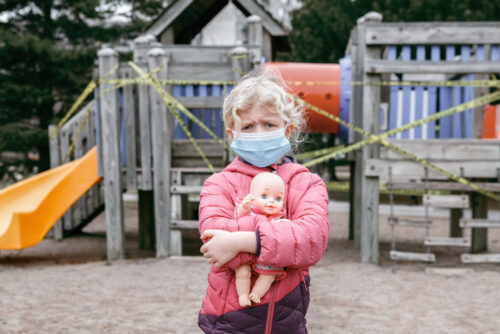A report from Grantmakers for Education provides insight into the direction that grantmaker giving is trending.
In recent weeks, news about the decline in charitable giving has captured headlines and left nonprofits feeling apprehensive. With uncertain times ahead, it’s worth taking a moment to consider the first national survey of education funders since the pandemic, released in June by Grantmakers for Education (GFE).
Trends in Education Philanthropy: Benchmarking 2023 identifies three “big picture” trends funders say are having an impact on their giving. If philanthropic wells are, in fact, drying up, it behooves both educational organizations and grantmakers to consider these trends as they decide how and where to prioritize their efforts.
Trends in Education Philanthropy is based on responses from 142 grantmaking organizations, 70% of which are GFE members. Information was collected online and from a single staff person at each organization. About two-thirds (65%) of respondents identified as family, private, or independent foundations. More than half (57%) take a local, place-based approach to their work, and nearly two-fifths (39%) fund at the state and/or national levels.
Of course, survey respondents comprise only a fraction of education funders in the philanthropic sector. Hence, the survey does not claim to be exhaustive, precise, or scientific. Its objective was to ask specific and open-ended questions that foundation staff could answer readily and that, in aggregate, reveal noteworthy trends. Here are three trends it highlights:
1) Funders are worried about the negative effects of political polarization.
When asked to identify their top concern for the next five years, grantmakers most commonly pointed to the negative effect that current political polarization will have on education issues. Since this is a top concern, it informs their grantmaking strategies.
The strategy they most often support financially to counter this polarization involves getting individuals and different community groups to talk to each other. They seek through this approach to create a new narrative focused on dialogue and understanding.
A takeaway to consider: while individual donors may be animated more by “oppositional giving” (us versus them), grantmaking organizations are trending towards supporting proposed solutions that bridge differences and create mutual understanding.
2) At the same time, the vast majority of funders seek to overhaul the status quo.
Out of 37 possible priority areas, more than two-thirds of funders identified “overhauling the education system” as the most funded investment area. But approaches to this overhaul vary greatly. This category and the category “supporting school choice and charter schools” each account for 7% of grant dollars awarded by funders. This is the highest percentage of overall grant dollars going to an individual category out of the nineteen that receive funding support.
A takeaway: This is further evidence confirming a developing consensus that, post-pandemic, the entire education system is ripe for change. The appetite for alternatives to the status quo is as strong with grantmakers as it is with parents and educators.
3) Funders are reckoning with the mental health crisis in our nation’s young.
Almost two out of three funders are investing in socioemotional learning (62%) and mental health and trauma informed care (62%). This is almost twice the percentage tracked in the last GFE funding report—when one out of three (33%) funders reported investing in these areas in 2018.
Now, a majority of funders are investing in wraparound social service supports for children and families. And close to half of respondents (46%) say they will increase financial support for these categories over the next two years.
A takeaway: Grantmaking organizations are increasingly attuned to the socioemotional and psychological dimensions of learning. As students struggle with learning loss and a massive uptick in mental health disorders after Covid, this trend will likely continue to inform funding decisions.
For nonprofits worried about the decline in giving, Trends in Education Philanthropy: Benchmarking 2023 offers some reason for cautious optimism concerning changes that funders anticipate in education grant budgets in the next fiscal year. Only 14% anticipate a decrease in funding; almost six in ten (57%) say funding will remain about the same; the remaining 28% project a funding increase, with 10% saying that the increase will be less than 10% and 18% saying it will be 10% or more. In other words, the number of grant-making organizations that expect to give more money is 2x the number that anticipate a reduction.
One other trend in philanthropic practice identified by the report bears mentioning. It shows that around nine in ten (91%) funders report engaging in some collaborative activity with other funders, such as learning networks (74%) or affinity groups (66%) like the GFE. This number has been stable since the first GFE benchmarking report in 2008. That said, for the first time in GFE reporting, a majority of funders (54%) also indicated that their organizations had pooled funding with other foundations.
But there is a large gap between the nine in ten grantmakers who voice support for collaboration and the amount of total funding—less than 5%— provided by funders towards these efforts. “Interest in collaboration is not matched by levels of funding,” the report says. It is possible, however, that this is a leading indicator of a significant change in how grantmaking organizations go about their business.
Finally, there were four priority funding areas in education philanthropy that respondents highlighted: early learning; K-12 education; postsecondary and career pathways; and education beyond classrooms and schools. Postsecondary and career pathways in particular garnered significant support in terms of funder interest, share of funding projected to go to the topic, and anticipated increases in funding over the next two years.
The American spirit of generosity has always had an important role to play in providing philanthropic support to the nation’s formal and informal educational institutions and organizations. That won’t change any time soon. But, as the National Commission on Philanthropy and Civic Renewal wrote in 1997, the challenge to education funders remains the same as well: to give smarter and give better so that individual lives and communities are improved.






